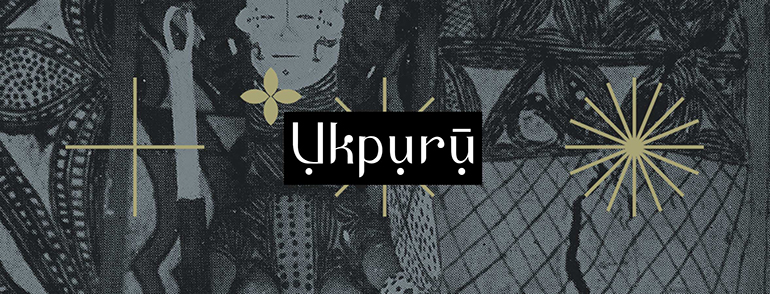 Ohafia women with long braids fashionable in Ohafia at the time. Photographed by Rev. William T. Weir. From The Women's Missionary Magazine of the United Free Church of Scotland, 1904. Google digitisation.
Ohafia women with long braids fashionable in Ohafia at the time. Photographed by Rev. William T. Weir. From The Women's Missionary Magazine of the United Free Church of Scotland, 1904. Google digitisation.
Ohafia is a society where rights to farmlands are passed through the maternal line and where there were women, although rare, who joined the usually male Ekpè society. A number of Ohafia women warriors, dike nwaàmị̀, local and married into Ohafia, are recorded in the history and folktales of Ohafia. A version of one particular story tells of Nne Mgbaafo who, in war gear, risked her life looking for her husband who she thought was killed by enemies in Ibibio territory. Putting her life on the line, Nne Mgbaafo's intimidation of the enemies led to them revealing that her husband had in fact been kidnapped and, through her bravery, she was able to take him back to Ohafia.
Another story tells of Inyan Olugu whose husband, Itenta Ogbulopia, hadn’t taken heads during battle and therefore hadn’t solidified himself as dike, a valiant warrior. As an onye ụjọ, a coward, his status opened him and his wife up to harassment and humiliation. Inyan Olugu took things into her own hands to secure the honour of her house. She took her husband into the forests of the Nkalu, getting her battle-shy husband to accompany her with the expectation of harvesting palm fruits. While her husband scaled a palm tree, she shot five Nnong Ibibie men dead with her husband's gun, procuring several heads and arranging them in a long basket. On returning to Ohafia, she presented the heads to the ikòrò, the ancestral slit drum that traditionally receives sacrifices. As warriors hailed her husband, Inyan Olugu told the revellers to also sing praises of Inyan Olugu who brought heads and gave the honour to her husband.
Later in the 20th century, by the instruction of the divinity Kalu Akanu through a woman in the compound of his priesthood, Nne Uko Uma Awa of Akanu Ohafia, with other girls during their age-grade's coming-of-age ceremony, carried out a ritual hunt usually done by boys. The girls were led by Nne Uko who dressed in attire usually worn by male warriors including a warrior's loincloth and an òkpu agụ, the leopard cap. Nne Uko continued to dress in a typically male style.
Nne Uko was admitted into the usually exclusively Ekpè society, danced the male style of the iri agha dance of Ohafia warriors, and married two wives who had children through Nne Uko's brother. Nne Uko had yam titles as a successful farmer with the assistance of the wives and children and became the custodian of the maternal lineage shrine dedicated to named female ancestors. In later years, Nne Uko wore more conventionally female attire. In Nne Uko's words, “I dressed like a man because by creation I was meant to be a man. But as it happened, when coming into this world I came with a woman's body.” These are some of the stories of the dike nwaàmị̀ of Ohafia.
Sources: Chukwuma Azuonye (1990). The Performances of Kaalu Igirigiri, an Ohafia Igbo Singer of Tales. John C. McCall (1996). Portrait of a Brave Woman.
2 comments:
i appreciate this piece, reason being that i am ohafian, i did appreciate if i can get links to more stories like this
Soy Juanjo Andreu, español interesado en la cultura africana. Solo quiero agradecer a quien puso en marcha este blog la para mí enorme contribución a conocer los pueblos de Nigeria, mi
más cordial enhorabuena y agradecimiento
Post a Comment